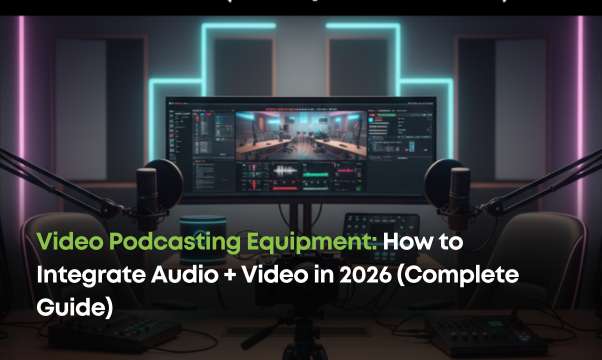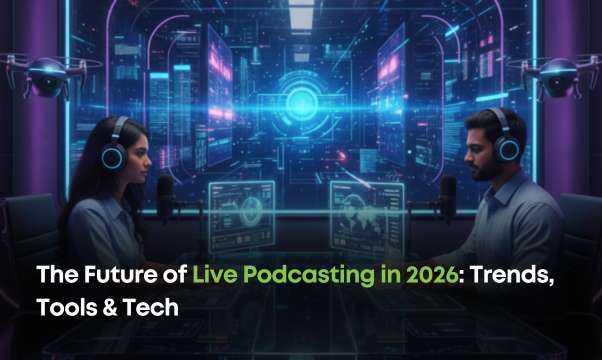Human vs. Automated Audio Annotation: Which One Delivers Better Accuracy?
Nov 21, 2025, Nishi SinghHuman annotators deliver higher accuracy in complex, noisy, or emotion-heavy audio, while automated annotation tools excel in speed, cost, and scalability. A hybrid Human-in-the-Loop (HITL) approach offers the best balance of accuracy and efficiency.
Audio data has become an essential component of modern AI - powering voice assistants, transcription engines, entertainment, smart devices, and multilingual communication. But before any model can understand sound, it needs high-quality annotated audio data.
The central question many teams face is:
“Should we use human annotation, automated annotation, or a hybrid approach?”
What Is Audio Annotation? (Definition Box)
Audio annotation is the process of tagging, labeling, or transcribing sound elements within an audio file so machine learning systems can understand them.
Audio annotation tasks include:
Speech transcription
Speaker diarization (identifying “who spoke when”)
Labeling background noise
Detecting audio events (laughter, crying, door slams, sirens)
Emotion tagging
Identifying accents, dialects, or speaking styles
High-quality annotation directly impacts AI accuracy, model reliability, and downstream output quality.
Human Annotation Accuracy: Why Humans Still Lead
Human annotators provide the highest accuracy, especially with complex, ambiguous, or emotion-driven audio.
Human annotation involves skilled professionals manually listening and labeling audio. Despite automation advancements, humans remain the gold standard for quality.
Strengths of Human Annotation
1. Superior Context & Nuance Interpretation
Humans understand:
Sarcasm
Emotions
Idioms
Cultural references
Ambiguous phrasing
Machines can miss these subtleties.
2. Best Performance in Overlapping or Noisy Audio
Real-life audio includes:
Multiple speakers
Crosstalk
Echo
Poor microphone quality
Environmental noise
Human annotators can distinguish messy layers far better than AI models.
3. Flexibility to Follow Complex Guidelines
Humans adapt to:
Intricate rule sets
Domain-specific instructions
Edge cases requiring judgment
Perfect for legal, medical, and linguistic-quality datasets.
Weaknesses of Human Annotation
Higher Cost: Skilled labor is expensive.
Slower Speed: Manual processes can’t match machine throughput.
Subjectivity Risk: Requires strict QA to reduce annotator variation.
Scalability Issues: Growing teams means recruiting, training, and management challenges.
Automated Audio Annotation Accuracy: How Good Is It?
Automated annotation is ideal for large-scale projects requiring speed and cost efficiency but may lack accuracy in complex audio environments.
Automated annotation uses AI models - speech recognition, audio classification, diarylation, and extraction algorithms - to label data.
Strengths of Automated Annotation
1. Extreme Speed & Scalability
Tools can process thousands of hours of audio in minutes.
2. Lower Cost
Minimal human labor means significantly reduced expenses.
3. High Consistency
AI follows the same logic every time - no fatigue or subjective variation.
Weaknesses of Automated Annotation
1. Lower Accuracy in Complex Audio
AI may struggle with:
Accents & dialects
Code-switching
Overlapping speech
Distorted or noisy input
2. Limited Contextual Intelligence
AI identifies patterns - not meaning.
Sarcasm, emotion, or intent can be misinterpreted.
3. Performance Depends on Training Data
If the model hasn’t seen a pattern before, it can’t annotate it well.
Human vs. Automated Audio Annotation: Comparison Table
Use Cases: When Each Method Works Best
Use Cases Requiring Human Annotation
· Legal or medical transcription
· Multi-speaker or overlapping audio
· Emotional analysis (anger, sarcasm, tone)
· Sensitive content that requires accuracy
· Low-resource languages or uncommon dialects
Use Cases Ideal for Automated Annotation
· Massive datasets
· Speed-sensitive projects
· Early-stage dataset pre-labeling
· Simple transcription tasks
· Real-time applications
Human-in-the-Loop Annotation (HITL): The Best of Both Worlds
HITL blends automation for speed with human oversight for accuracy - ideal for most modern AI workflows.
How HITL Works
AI performs the initial annotation
Humans review, correct, and refine the output
Machine learning models are retrained with improvements
Benefits of HITL
Higher accuracy than fully automated annotation
Faster and cheaper than pure human annotation
Continuous improvement of the AI model
Balanced scalability and quality
HITL is becoming the industry standard for audio annotation at scale.
How to Choose the Right Annotation Method (Decision Checklist)
Choose Human Annotation If:
· Accuracy is critical
· Audio is complex
· Project involves sensitive domains
· You need cultural/emotional interpretation
Choose Automated Annotation If:
· You have large datasets
· You prioritize speed
· Some accuracy trade-offs are acceptable
· You need cost-efficient processing
Choose Human-in-the-Loop If:
· You want speed + accuracy
· Your audio varies in complexity
· You want ongoing model improvement
Future Trends in Audio Annotation
AI-powered audio labeling is evolving rapidly. Upcoming advancements include:
LLM-enhanced audio understanding (context-aware speech models)
Zero-shot audio classification for unseen sounds
More accurate diarization models using multi-modal embeddings
Self-learning annotation systems powered by reinforcement learning
Accents & dialect adaptability through domain adaptation techniques
Hybrid systems combining LLMs + human validation will dominate future workflows.
Conclusion
The debate between human vs. automated audio annotation ultimately comes down to accuracy vs. efficiency.
· Human annotation delivers the best quality
· Automated annotation provides unmatched speed and scalability
· Human-in-the-loop offers the ideal combination for most projects
As organizations aim for reliable AI outcomes, partnering with experienced providers becomes essential.
myTranscriptionPlace delivers high-quality transcription, annotation, and multilingual solutions in 400+ languages, combining expert human annotators with cutting-edge automation to ensure the perfect balance of speed and accuracy.
Our Popular Services
Human Transcription | Automatic Transcription | Interactive Transcription | Human Translation | Spanish Transcription | Focus Group Transcription Services | Qualitative Data Analysis | Medical Transcription Services | Technical Translation Services | Closed Captioning Services | Accurate Transcription Services | Video Transcription Services.






